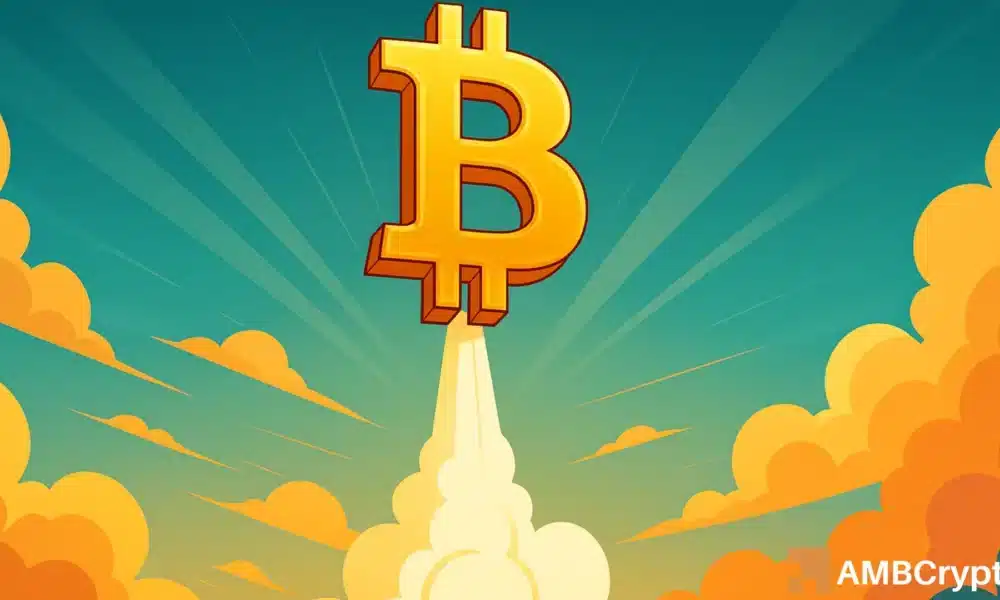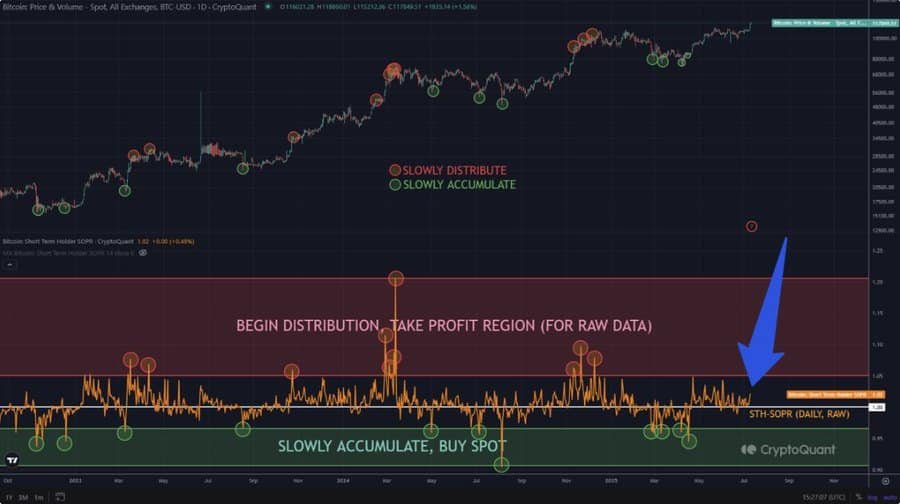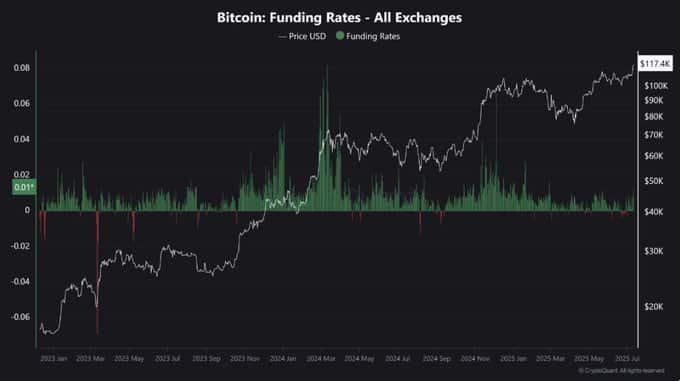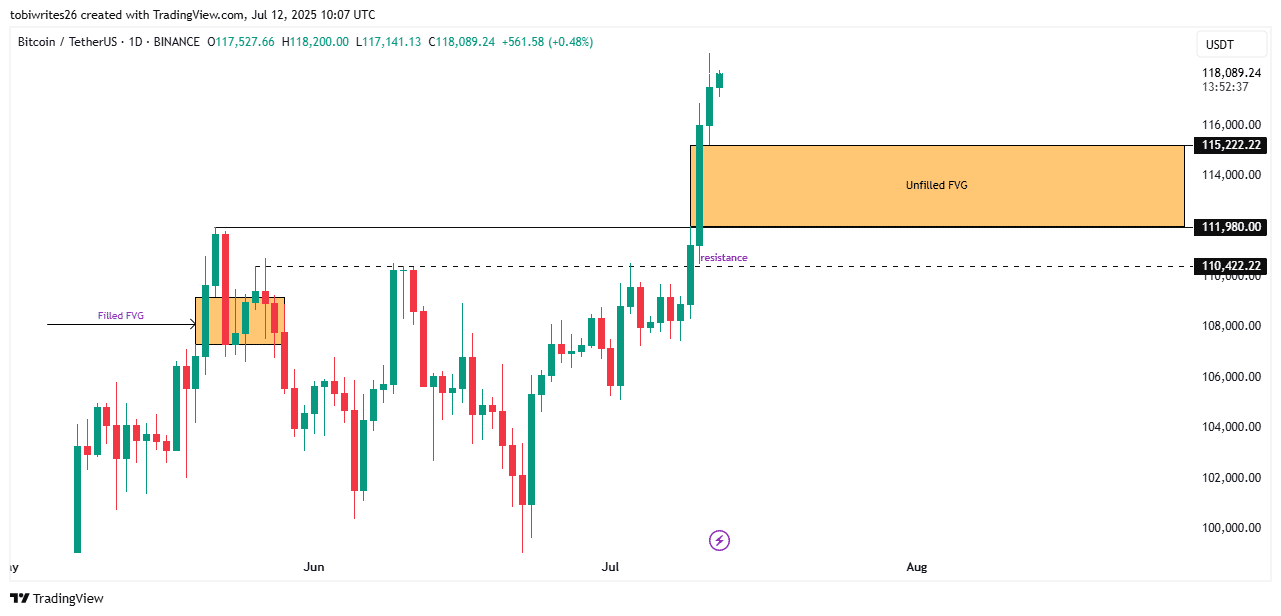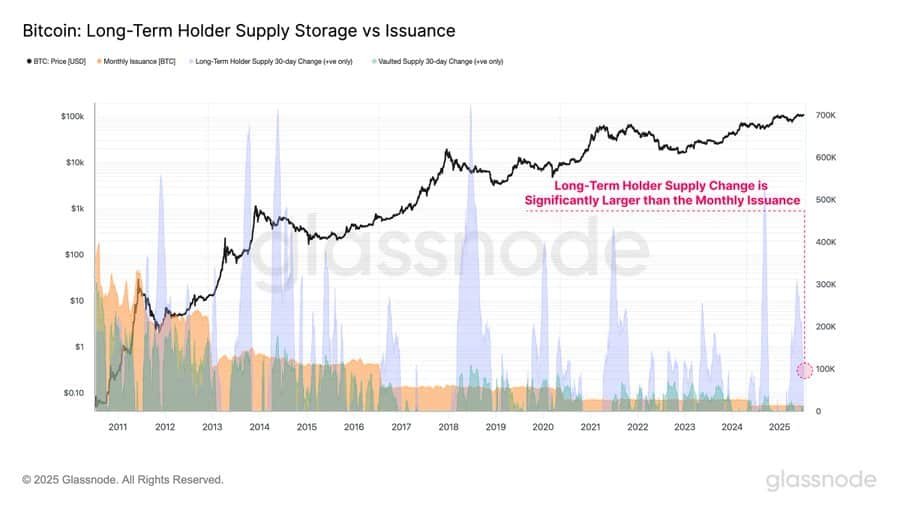Key Takeaways
- Bitcoin’s recent rally has been met with an unusual investor response, as profit-taking remains minimal and buying volume stays moderate. A supply squeeze may be on the horizon, with available Bitcoin on exchanges dropping to a market low.
Bitcoin [BTC] has seen a significant surge over the past week, first closing at a new weekly high of $109,216 and then forming an all-time high of $118,856 at the time of writing.
Interestingly, this rally has not triggered typical investor behavior—there’s little profit-taking. In fact, more traders appear bullish, though not excessively so.
AMBCrypto analysis points to historical trends, but one thing is clear: market sentiment remains strongly bullish.
Short-term holders refuse to sell — What’s going on?
On-chain data reveals that investors are taking an unconventional approach during this rally.
According to CryptoQuant, short-term holders (STHs), who accumulated Bitcoin at an average price of $100,315, are now roughly 18% in profit, but have yet to sell.
These holders typically keep BTC for less than 155 days and are known for quickly taking profits.
The chart below highlights how STHs usually behave when Bitcoin hits a new high. Historically, they begin with slow distribution, followed by a period of renewed accumulation.
In this case, the SOPR (Spent Output Profit Ratio)—a metric used to measure profit-taking activity—has remained neutral.
There have been no strong signals of either accumulation or distribution, suggesting STHs are willing to hold longer than usual.
Derivatives market calm — No FOMO in sight
The derivatives market also reflects this restrained optimism. According to CryptoQuant, the funding rate currently sits at 0.01.
This indicates a modest bullish bias, contracts are slightly favoring longs, but without any signs of extreme sentiment or fear of missing out (FOMO).
This further supports the notion that market participants are positioning themselves cautiously, even amid new highs.
Will the FVG zone pull Bitcoin back?
When Bitcoin previously broke above $111,980, it left behind what’s known as a Fair Value Gap (FVG)—a zone where orders were left unfilled.
Price later revisited that gap, rebounded, but failed to sustain an extended rally due to selling pressure.
A similar FVG exists now between $115,222 and $111,980. If historical patterns play out, Bitcoin might retest this zone.
However, if selling pressure stays low—as it is currently—and both STHs and derivatives traders maintain a bullish stance, Bitcoin could continue its upward momentum.
In that case, the FVG may act as a launchpad for the next leg up, potentially pushing BTC beyond its recent all-time high.
A supply squeeze brewing?
Bitcoin’s supply squeeze appears to be emerging in an unusual way.
Bitcoin’s availability on exchanges continues to fall, and the dynamic between long-term holder (LTH) accumulation and miner issuance suggests mounting demand.
Glassnode data shows that LTHs are acquiring Bitcoin at a faster rate than miners are issuing new supply.
This trend points to a strong bid under the market. During periods of high demand, investors typically become more reluctant to sell unless prices are higher—setting the stage for further upward pressure on BTC’s price.


